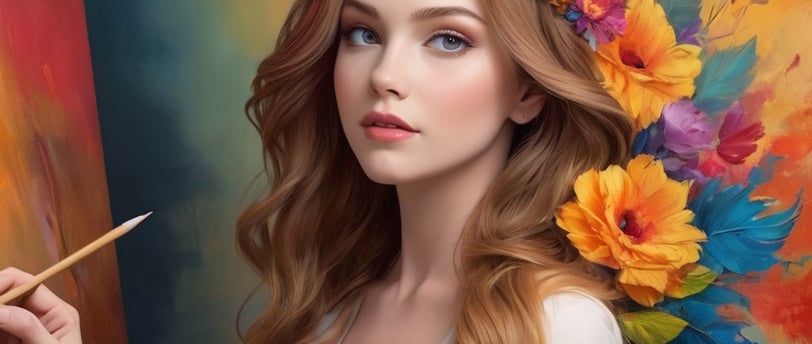Creative Techniques and Tips for Enhancing Coloring Quality
Your Artistic Expression
12/27/20232 min read


Artistic expression is a journey of exploration and creativity. Whether you are a seasoned artist or a beginner, discovering new techniques and tips can significantly enhance your creative process. In this blog post, we will delve into various creative techniques and provide practical tips to help you expand your artistic horizons and enrich your work.
1. Experiment with Different Mediums
One of the most exciting aspects of art is the vast array of mediums available. Don’t limit yourself to just one; explore different materials like watercolors, acrylics, pastels, or digital art tools. Each medium has its unique properties and can add a different dimension to your work.
2. Embrace the Power of Color Theory
Understanding color theory can transform your art. Learning how colors interact and affect moods can help you create more impactful pieces. Experiment with complementary colors for bold contrasts, or analogous colors for harmony and unity in your artwork.
3. Practice Sketching Regularly
Sketching is a fundamental skill that can improve your overall art. Regular sketching helps refine your observation skills and enhances your ability to capture the essence of your subject. Carry a sketchbook with you and draw whenever inspiration strikes.
4. Explore Different Perspectives
Changing your perspective can lead to unique and interesting compositions. Try drawing or painting from different angles or perspectives. Experiment with bird’s-eye views, worm’s-eye views, or play with foreshortening to bring dynamism to your art.
5. Incorporate Texture
Texture can add depth and interest to your work. Use techniques like impasto in painting to create a tactile quality, or experiment with mixed media to introduce different textures. Even in digital art, texture can be simulated to give a lifelike feel to your creations.
6. Use Light and Shadow to Your Advantage
Understanding how light and shadow work is crucial in art. It can create mood, add depth, and bring realism to your work. Practice by observing how light falls on different objects and the shadows they cast.
7. Master the Art of Composition
Good composition is key to creating compelling artwork. Learn and apply compositional techniques like the rule of thirds, leading lines, or symmetry. Also, don’t be afraid to break these rules once you understand them to create more dynamic compositions.
8. Keep a Source of Inspiration
Inspiration is essential for creativity. Keep an inspiration journal, mood board, or a digital folder filled with things that inspire you - be it photographs, quotes, art by others, or even color palettes.
9. Stay Open to Learning
The art world is always evolving. Attend workshops, watch tutorials, read books, or join art communities. Learning from others can provide new insights and techniques that you can incorporate into your work.
10. Practice Mindfulness in Art
Mindfulness can significantly enhance your creative process. Be present in the moment when creating art. Observe your thoughts and emotions as you work and let them guide your artistic expression.
Conclusion
Creativity in art is an ever-evolving process. By experimenting with different techniques, embracing new ideas, and continually seeking inspiration, you can unlock new levels of artistic expression. Remember, the most important aspect of art is to enjoy the process and express yourself authentically. Keep exploring, keep learning, and let your creativity flow.
